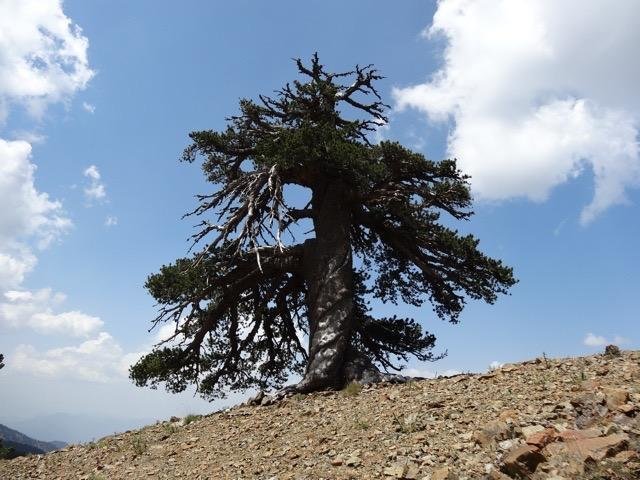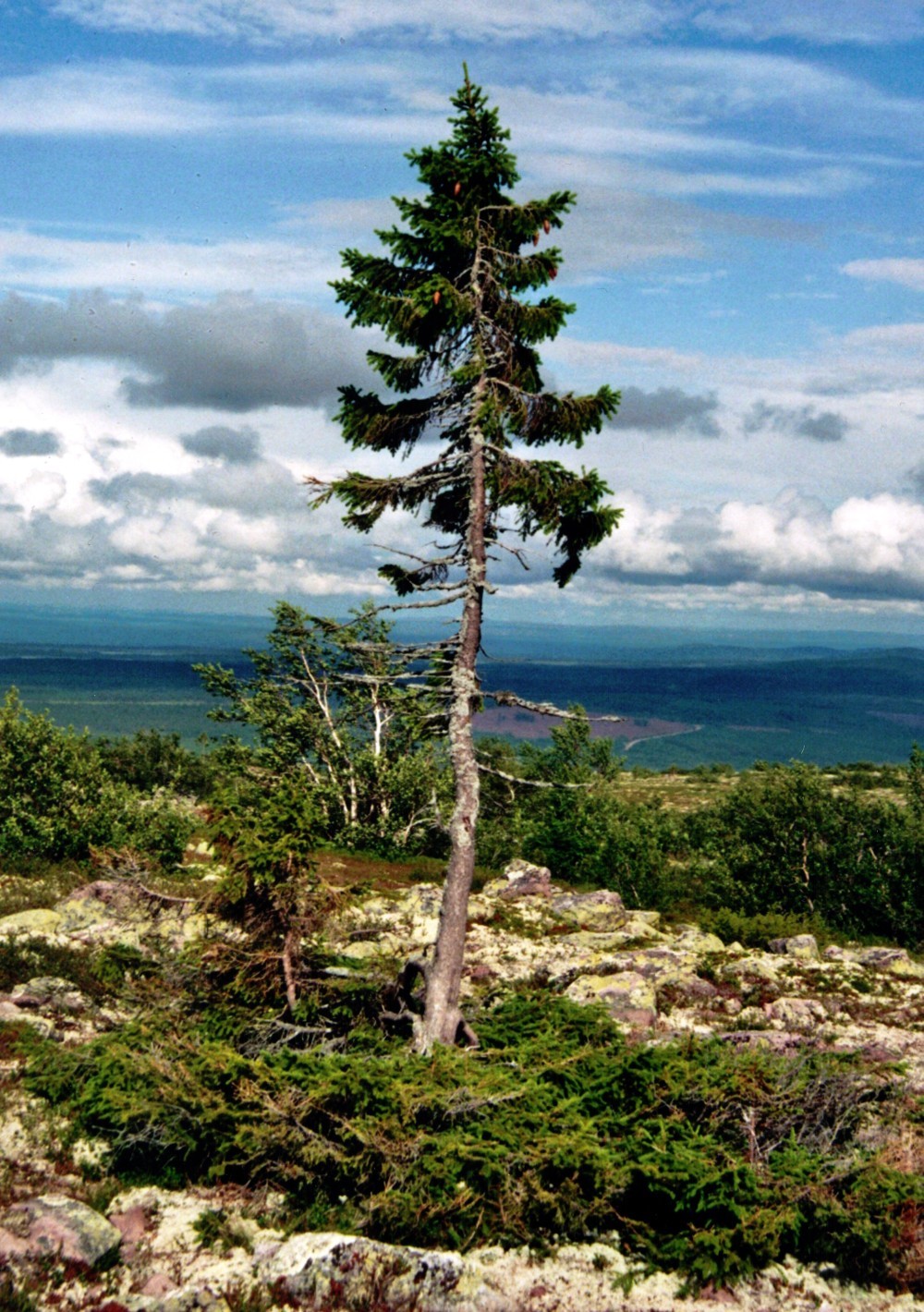Scientists have found the oldest tree in Europe, which is 1075 years old

Adonis, Bosnian pine over 1075 years old. Photo: Dr Oliver Konter, Mainz The
Bosnian pine tree ( Pinus heldreichii ) in the Pind Mountains in northern Greece is officially recognized as the oldest separately growing tree in Europe. A group of scientists from Stockholm University (Sweden), the University of Mainz (Germany) and the University of Arizona (USA) using the dendrochronological method determined that the age of the pine is at least 1075 years .
Dendrochronological dating involves determining the age of a tree by counting tree rings. There are several methods to do this without cutting the trunk: for example, by the number of whorls, by the thickness of the trunk, which is divided by the maximum thickness of the annual rings, or by using the Presler drill, which takes a sample of wood from its bark to the core. In this case, scientists used a drill and drilled the trunk to a depth of 1 meter. In this sample, dendrochronists counted 1,075 annual rings.
“It's amazing that such a large and impressive organism survived so long in such a harsh environment, on the earth that has been mastered by man for more than 3,000 years,” he wonders.Swedish dendrochronist Paul J. Krusic, leader of the scientific expedition that discovered the tree. During an expedition to the Pind Mountains, they found more than a dozen individual trees about 1000 years old. The expedition was sent by the Ecological Observatory in Navarino in collaboration with Stockholm University, the Academy of Athens and TEMES SA in order to study the history of the European climate and its impact on people's lives in the Mediterranean region.
Scientists hope that in this forest there will be stumps from fallen trees of the same age. Their annual rings will provide valuable information on climate change in Europe over the past thousand years.
The oldest of the discovered specimens received its own name - Adonis, in honor of the young Greek god of spring, who was famous for his unearthly beauty (the goddess of love Aphrodite fell in love with him) and personified the annual revival of nature.
“It is impressive that in the context of Western civilization, all of human history has passed alongside this tree; all empires, Byzantine, Ottoman, all the people who lived in this region. So many events could lead to his death. Fortunately, the forest has remained virtually untouched for over a thousand years, ”says Krusic.
Assuming a minimum age estimate of 1075 years, the Adonis tree sprouted in 941. This year, the old Russian prince of Kiev Igor Rurikovich went to Byzantium, and the Russian army crossed the Black Sea coast from the Bosphorus to Paflagonia. In the same year, Igor’s fleet of more than a thousand ships was defeated by the Greek fleet of the parakimomen of Patricius Theophanes and partially destroyed by Greek fire. After raids on the Byzantine lands and a series of defeats in September 941, Prince Igor returned home. That is, in 941, Russian troops were not far from the place in Greece where the Adonis tree sprouted.
Around the same years (936–950), Germany fought with the Czech Republic, and Hungary began to terrorize neighboring countries, captured all of Thrace and reached Constantinople, and the long-distance champions — the Scandinavian Vikings — made their way to the Black Sea for the first time and probably reached the Black Sea. North America.
When Adonis turned one hundred years old, gunpowder was invented in China, a king named Macbeth was crowned in Scotland, and the construction of St. Sophia Cathedral was completed in Kiev, and the Slavic state of Zeta declared independence.
When the Bosnian pine grew to an impressive 250 years, the University of Oxford was founded, the city of Bern was founded in the territory of the future Switzerland, the English king Richard sold Cyprus to the Templars, and the Novgorodians, along with the Karelians, made a sea voyage to Finland and took the city of Abo (now Turku).
At the age of 500, Adonis witnessed the Ottoman Empire conquering his native Greece, and many educated Greeks migrate to the west, contributing to the beginning of the Renaissance in Europe (by the way, the Greek immigrants were called “Pindos” by the name of the Pind mountains; this word is used until so far, but in a mysterious way has received a different meaning). Johannes Gutenberg in 1441 tests an experimental copy of the printing press and tries to cast the first letters.
1691: Adonis is already 750 years old. This year, the entire circulation of the book “Mathematical Foundations of Physics” by Isaac Newton was sold (about 300 copies sold incredibly quickly: in four years), and Johann Bernoulli found the chain line equation.
Finally, Adonis celebrated his millennium in a dark time for Europe, when Greece duringOperation Marita was occupied by Nazi Germany, Italy and Bulgaria.
And now the year 2016 has come. The tree continues to live in the same place where it was born during the heyday of the Byzantine Empire. Over the thousand-year history of Adonis, many historical events have taken place around, and how much more interesting will happen in future centuries!
Adonis is the oldest tree in Europe, but not in the world. The oldest of the separately growing trees in the world is the spinous intermountain pine, discovered in 2012 in the Inio National Forest ("Forest of Ancient Perennial Pines") in eastern California. The germination date of this tree is 3050 BC.

Pando Grove in Fishlake National Forest. Photo: Forest Service of the United States Department of Agriculture
And among the clonal trees, the oldest in the world is the Pando Poplar colony in Utah, whose root system was formed, according to various scientists , from 80,000 to 1,000,000 years ago.

Old Tikko. Photo: Karl Brodowsky
The oldest freestanding clonal tree in the world - Old Tikko spruce in Sweden, 9550 years old. Its germination date is 7534 BC. Unfortunately, history did not preserve information that was happening in Europe at that time.
